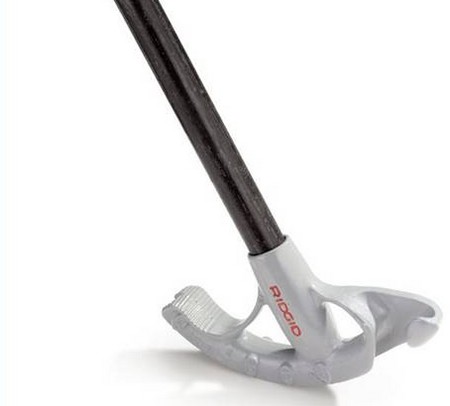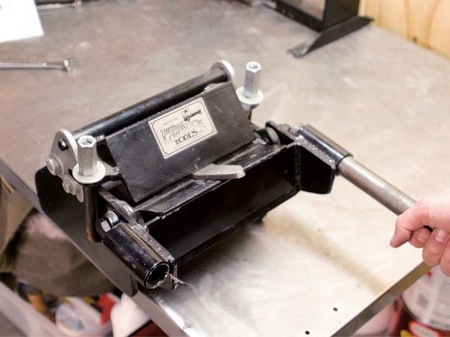The technique for bending in metal fabrication is much the same fo liker most metals, but the metals may require different pre-treatment. Thin sheets of mild steel can be bent cold; thicker pieces such as steel tubes may need to be at red heal before they can be bent easily.
Non-ferrous metals copper, brass and aluminium alloys are supplied in different tempers (degrees of hardness). Annealed (soft) and half-hard tempers of copper and brass can be bent cold without problems. Hard tempers of these metals may need annealing heating the metal until it is a dull red colour and either allowing it to cool slowly in air or plunging it into cold water to cool it quickly. Bending the metal will reharden (‘work harden’) it and it may be necessary to repeal the treatment with thick metal or complicated bends and then you have to cover it with MIL DTL 5541.

“Commercially pure’ aluminium may be bent without prior annealing. Aluminium alloys such as H9 (used for window frames and so on) and H15 (called Duralumin) are usually supplied in a heat-treated condition. These can be bent to some extent without cracking but they are rather springy. They may be annealed to make them more ductile but will lose a lot of strength in the process. Since aluminium alloys do not become red hot on heating it is difficult to judge the annealing temperature. As a guide, you can place a matchstick on the surface of the metal it should just char – or coat the metal with a thin film of soap and continue heating until the soap turns black. The metal should be allowed to cool in air after annealing.
Some metals are very difficult to bend – high-speed steel, for example, will not bend readily at temperatures below white heat – and some, like cast iron, are too brittle.
The first step is to mark the position of the bend. Think about this carefully when making complex bends as the distance from a set point, say the end of the metal, will be greater on the outside of a bend than on the inside roughly by the thickness of the metal itself. So if the inside distance is the important one, make a mark along the inside and bend to that, but if the outside distance matters, make a mark on the outside and allow for the stretching that will take place. This stretching of the outside and compression of the inside of a bend also means that the metal will become slightly thinner around the bend and its edges will tend to taper – a strip of metal will be wider on the inside of the bend than on the outside.

The metal to be bent should be firmly held in a vice. Sheet metal should be adequately supported on both sides by using wood or metal bending formers. The metal can then be bent along its length by using a light blow from a soft-handled hammer. When bending very soft metals, a piece of wood between the hammer and the metal will avoid hammer marks on the metal. Use light hammer blows and hit as near to the bend as possible. If the metal needs excessive force to bend it, then it will have to be bent hot.
With all that extra metal, you may want to contact metal recycling and copper recycling shops that offer metal recycling and copper recycling service to declutter your work station. Their special tools are available to help you bend soft or half-hard copper water pipes without the lube wrinkling or flattening. A well-packed filling of dry sand or a suitably sized bending spring may also be used.